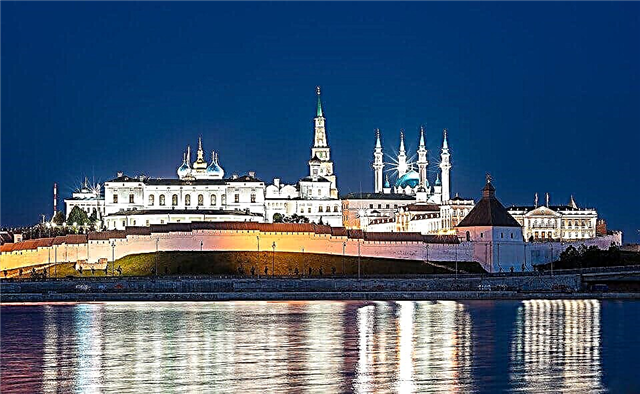Location: Portugal
Length: 17.2 km
Opening movement: March 29, 1998
Coordinates: 38 ° 45'32.0 "N 9 ° 02'19.0" W
Content:
Short description
The Vasco da Gama Bridge is the longest cable-stayed structure in Europe, connecting the banks of the Tagus River in Portugal. It stretches across the river expanses for more than 17 km.
This figure includes the length of all sections of the structure, incl. and the main bridge, and the access roads leading to it, and the viaduct. With the construction of such a solid crossing, it was possible to unload the suspension bridge named after April 25 and connect all the roads leaving the capital of the country Lisbon.

When developing the project of the bridge, the engineers managed to translate into reality an unusual and successful solution - the cable-stayed structure is gradually turning into a viaduct. For this reason, the entire structure does not have a traditional shape, since its cable-stayed part is located perpendicular to the coastline, and the viaduct is, as it were, parallel.
As for the name of the bridge, it was not named after the great navigator by chance. Insofar as the day of its opening fell on 03/29/1998, (then the 500th anniversary of the opening of the sea route from Europe to India was celebrated), the bridge was given the name "Vasco da Gama". Wanting to complete the construction work by this memorable date, the craftsmen made a lot of effort, as a result of which the longest European bridge stretched over the Tagus in 1.5 years from the beginning of its construction. But carrying out the work in such a short time turned out to be not an easy task, because both the design and the construction of the giant bridge required taking into account all the little things. And the work of the best engineers and 3,300 workers was not in vain: the bridge is able to withstand earthquakes with a possible shock strength of more than 8.7 points. In addition, it is not afraid of wind gusts reaching 250 km / h.

An interesting moment in the construction of the Vasco da Gama bridge for the craftsmen was the fact that they had to take into account the round shape of our planet. If this factor were ignored, the difference in height between the ends of such a long structure would be as much as 80 cm, which is a lot. The technical feature of the bridge is its curvature due to the unevenness of the bottom. The author of the project, Michel Verloge, also took care of the high strength of the bridge, plunging 2-meter diameter piles into the depth of the river bottom by almost 100 m.
At the same time, he thought over a number of technical nuances associated with the natural features of the area, and linked them with the likely onset of bad weather conditions. An experienced engineer managed to preserve the ecological purity of the environment by building a bridge as far as possible from the opposite bank (the natural environment of this area remained intact). The lighting of the structure was also thought out - it was designed and installed so that the light from the lighting fixtures does not fall on the river surface and does not disturb the natural ecosystem.

Exterior view of the Vasco da Gama bridge
The Vasco da Gama Bridge is divided into 3 sections, one of which is a 12-kilometer surface section. The other two sections are viaducts-overpasses with a length of 600 m and 4.8 km (from the north and south sides, respectively). The ferry has 6 lanes, but if more than 52,000 vehicles cross it, it expands to 8 lanes.
The bridge is divided into several sections:
- main 829-meter bridge with side sections;
- central viaduct with a length of 6.3 km, consisting of 80 sections;
- northern access roads;
- 488-meter north viaduct;
- southern access roads and viaduct, represented by 84 sections;
- 12-section viaduct "Expo", stretching for 672 m.

Reinforced concrete pylons of H-shape rise 160 m above the water surface. The service life of the entire structure is 120 years. Since 2008, the passage for motorists across the bridge to the northern part of Portugal and its capital has become a toll. So, 2.25 euros is charged from each driver of a passenger car, but 10.1 euros will have to be spent for driving a truck over the bridge. In this case, the payment for travel to the south is not taken.











